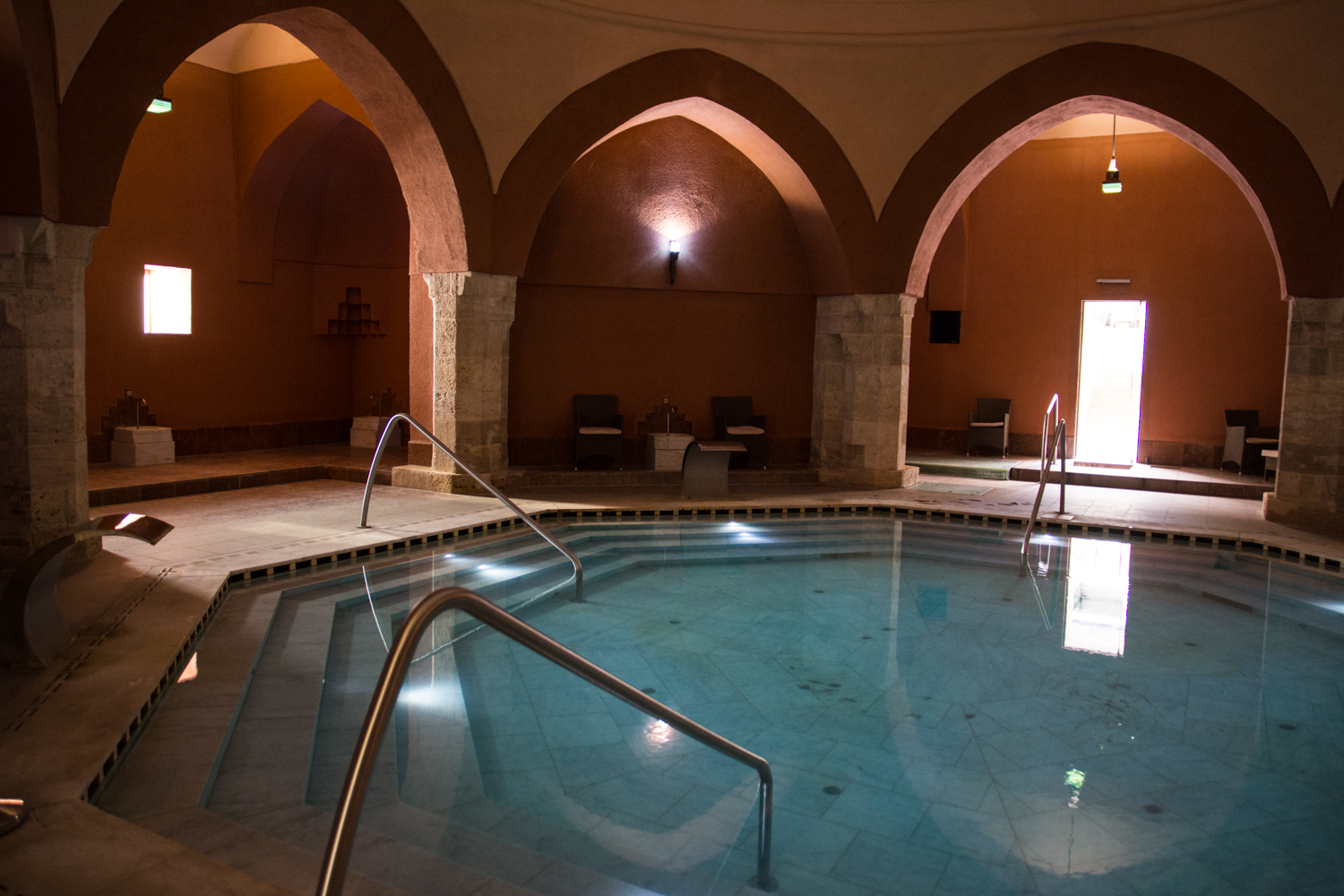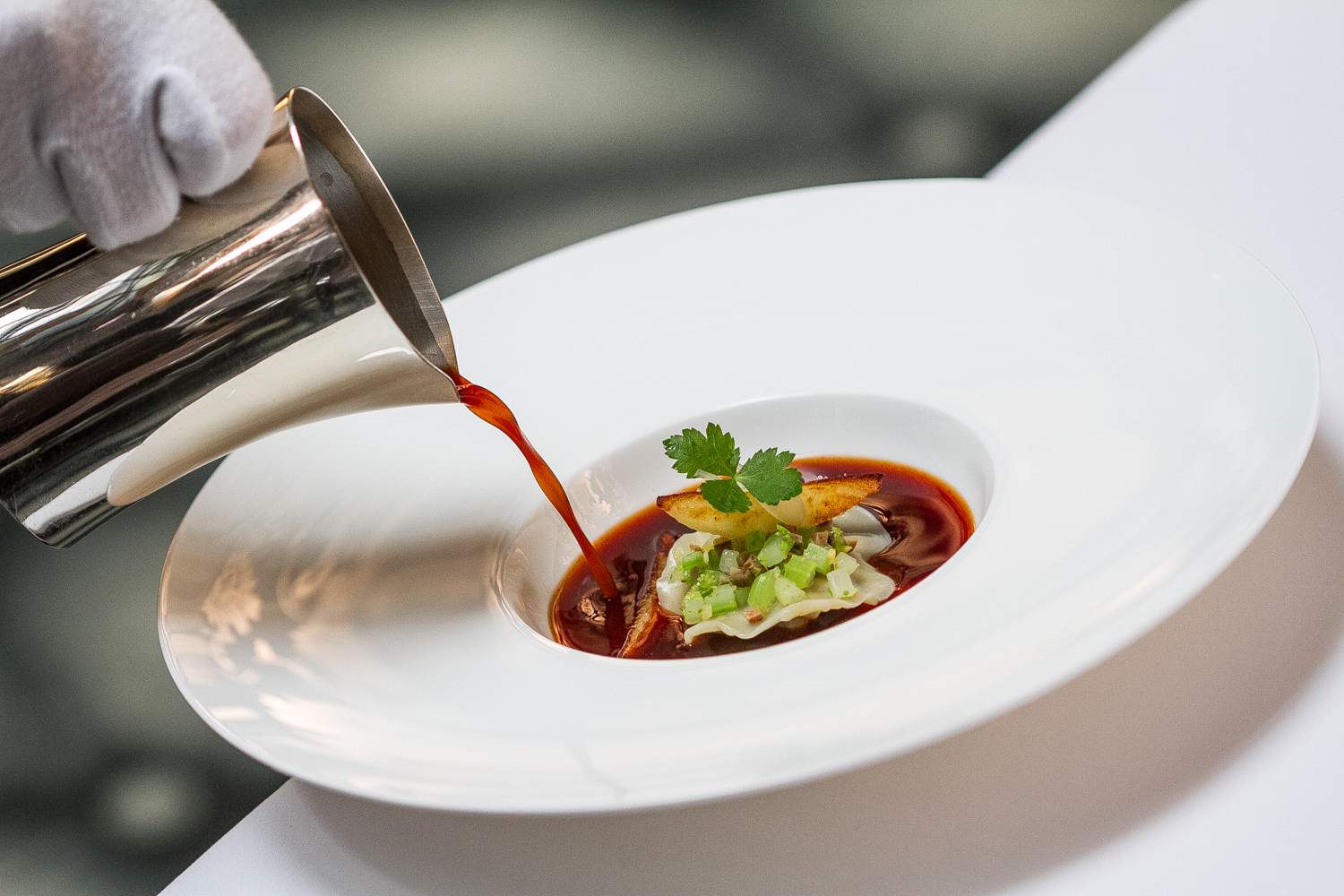Whether you are taking a quick trip to the Hungarian capital or are staying here for years, step inside any of these striking urban settings to get unique insider perspectives on assorted Budapest attractions. From monumental sights to classic coffeehouses to underground caverns, a wide variety of sheltered destinations welcome visitors citywide to spend unforgettable days and nights amid buzzing metropolitan sites no matter what the weather brings.
1/10
Historic landmarks
Multiple postcard-superstar landmarks adorn the city at both sides of the Danube, and while many of them are open-air attractions, there are several monumental sights that welcome the public to check out their impressive interiors. A visit to Hungary’s neo-Gothic Parliament building is a must-do activity in the capital city: guided tours around the building’s interior – including viewing the Holy Crown of Hungary – are offered in multiple languages throughout the day. On the other side of the river, the green-domed Royal Palace (also known as Buda Castle) is a skyline-defining edifice with multiple wings housing three illustrious institutions that all invite people indoors – the National Gallery (see below), the Budapest History Museum, and the Széchényi Library. Meanwhile, urban explorers can embark on a time-transcending journey by descending to Continental Europe’s first metro running beneath central Pest, an inherently indoor attraction that traverses beneath significant outdoor sights like Vörösmarty Square, Andrássy Avenue, and Heroes’ Square.
2/10
Performance halls
Budapest offers many high-class cultural events produced at several monumental venues that are equally eye-catching inside and out. Towering above Budapest’s prominent Andrássy Avenue, the gracefully statuesque Hungarian State Opera, designed by celebrated Hungarian architect Miklós Ybl, is one of Budapest’s main landmarks, with the artfully decorated interior hosting masterful opera performances during autumn, winter, and spring. At one end of vibrant Liszt Ferenc Square in central Budapest, the elaborately decorated building of the Liszt Ferenc Academy is known worldwide as a renowned educational institute for top-caliber musicians, and this Art Nouveau building boasts a beautifully restored concert hall staging diverse concerts by students and virtuosos alike. Meanwhile, a 21st-century performance hall stands beside the Danube in District IX, where the massive decade-old Palace of Arts hosts varied cultural events within a cutting-edge concert hall and other theater facilities, alongside the modern Ludwig Museum (see below).
3/10
Monumental museums
Notable museums are sprinkled throughout the city’s cultural sphere, presenting an abundance of precious artifacts and classical and contemporary artworks by local and international masters representing diverse genres. To learn about the country’s history, head to the Hungarian National Museum’s powerfully pillared building that presents everything from local archeological and ethnic relics to rare pieces of fine art. Within Buda’s Royal Palace, the Hungarian National Gallery showcases an immense collection of traditional works from the Middle Ages through the Renaissance, the Gothic period, and recent times, all documenting the development of Magyar fine arts. Budapest continually evolves as an important hub for modern-day art as well, and there are many museums and galleries across town showcasing creative contemporary pieces: some of the most remarkable sites are the Kunsthalle on the iconic Heroes’ Square and the avant-garde Ludwig Museum within the Palace of Arts.
4/10
Houses of worship
Amid otherworldly beautiful settings, iconic places of prayer grant visitors peaceful refuge from busy city life. A jaw-dropping scene awaits sightseers at St. Stephen’s Basilica, a monumental domed church in the heart of downtown Pest named after the founding king of Hungary. This brightly ornate building houses the country’s most revered religious relic – the mummified Holy Right Hand of St. Stephen – along with an elaborate collection of outstanding artworks and stained-glass windows, while a pipe organ frequently provides spirit-boosting concerts. Towering above Fishermen’s Bastion, the gleaming steeple of Matthias Church now stands in its original glory after a recent renovation, while inside the geometrically patterned wall paintings and arched ceilings provide amazing visuals. Back in the city center, buzzing District VII is the location of Europe’s largest Judaic temple, the Dohány Street Synagogue – the center of Hungary’s thriving Jewish community, welcoming visitors inside on guided tours and to the onsite Hungarian Jewish Museum.
5/10
Market halls
Proffering plentiful farmer’s goods from seasonal fruits to crispy veggies to dairy products to fresh fish and meat, Budapest’s artistically arched indoor market halls always provide colorful settings any time of year. Featuring a decorative exterior embellished by colorfully glazed Zsolnay tiles, the city’s legendary Great Market Hall is not only a prominent tourist destination, but also serves as a significant source of provisions for many high-class restaurants and local households. The recently restored Klauzál Square Market Hall tucked amid Pest’s District VII is back in action with a modernized interior, diverse vendors, and a supermarket that is open for business seven days a week. On the city’s Buda side, garden-fresh produce is sold under the Fény Street Market Hall’s metal-framed roof, located just a short stroll away from the busy intersection of Széll Kálmán Square.
6/10
Thermal baths
One of the most iconic activities of the Hungarian capital is to take an energizing dip in one of the city’s stimulating spas, where pools are filled with mineral-rich natural thermal water that gushes from deep below the earth. Even during the coldest months, we can immerse in the the steamy indoor facilities of the Art Nouveau Gellért Bath, an elegantly decorated wellness palace featuring pools ranging from 35°C/95°F to 40°C/104°F. At Király Bath in Buda’s District II, four pools offer hot spring water and a historic journey amid a moisturized milieu within a Turkish-style edifice, while the recently refurbished Rudas Bath is a perfect pick for a cozy dip with its heavenly healing facilities. In addition to the iconic outdoor thermal pool hosting chess players at the water’s surface, Széchenyi Bath in Pest’s City Park features a number of indoor soaking spots and rejuvenating services.
7/10
Natural caves
Budapest’s cherished thermal waters not only shaped the city’s bathing culture – they also carved through the ground below to form winding tunnels now stretching directly beneath urban residential areas to offer exciting subterranean adventures all year round. Anyone can descend underground to navigate through the dark chambers of the Pál-völgyi and Mátyás-hegyi Cave systems, led by professional-spelunker guides: the three-hour tour includes a fair share of clambering and crawling inside the pitch-dark caverns, with helmet-mounted lamps being the only sources of light. The neighboring Szemlő-hegyi Cave provides less demanding underworld strolls with stone-paved walkways and mounted light facilities, which make the tours here suitable for all ages.
8/10
Local restaurants
From Michelin-starred restaurants for fine dining to cosmopolitan cafés serving international eats to street-food stalls offering hefty local treats, Budapest literally caters to all tastes. Gourmets can indulge in tongue-tingling delicacies at Onyx – a refined modern eatery that actively aims to elevate Hungarian cuisine to an exquisite level, located within the renowned Gerbeaud House on Vörösmarty Square. However, for more affordable regional tastes, plenty of traditional eateries proffer paprika-infused meals within customary Budapest settings, such as the historic Múzeum Café, the cherished Kádár Étkezde (serving lunches in an eatery largely unchanged for decades), and the Kéhli restaurant along Óbuda’s cobblestoned streets, serving juicy stuffed cabbage while live regional music enlivens the fancifully decorated walls. Meanwhile, around major Budapest hubs like the Basilica and Erzsébet Square, travelers can find a rich variety of international dishes at sit-down restaurants with offers ranging from Japanese sushi to Indian curry to Italian pasta to American barbecue, and much more.
9/10
Classic coffeehouses
Magyar coffeehouse culture dates back to the 18th century, and cozy caffeine-charging hangouts soon evolved to become an integral part of the city’s social life. Located on Szentháromság Street in the Castle District, Budapest’s oldest extant coffeehouse is the Ruszwurm patisserie, serving scrumptious local sweets like the Dobos torte, along with crispy strudels and a selection of Hungary’s national cakes. Creamy hot drinks and artistically crafted pastry selections are devoured amid aristocratic settings at the longstanding New York Café located within the Boscolo Hotel in downtown Pest, while the old-world atmosphere at the Centrál Café once welcomed some of the greatest writers in Hungarian history. Along with the heritage coffee shops, the city provides new-wave java drinks to caffeine junkies at a sprawling range of trendy spaces, like the light-flooded Budapest Baristas site on Múzeum Boulevard, while the oddly-named Rojt és Bojt on the other side of the Danube offers homey breakfast experiences with croissant sandwiches and milkshakes.
10/10
Hot nightlife
With an abundance of stylish lounges, eccentric ruin pubs, affordably priced dive bars, and whimsical party places, Budapest might be one of the most pulsating cities in Europe when it comes to spending a mind-blowing night out on the town. In the past few years many established party zones emerged in the city, including the ever-busy Gozsdu Courtyard and Kazinczy Street in District VII, both housing a hefty lineup of hip bars like the colorful Spíler Shanghai and the new BRKLYN Bar, as well as the area around St. Stephen’s Basilica, which showcases a range of highly-frequented wine bars such as DiVino or Innio. No visit to Budapest is complete without popping into one of the city’s world-famous ruin pubs (bars forming a maze of internal spaces within abandoned buildings): gulp down a few shots of pálinka (Hungary's fruit-based brandy) amid psychedelic settings at Szimpla Kert on Kazinczy Street, or pay a visit to Instant on Nagymező Street for a vibrant, all-night-long jamboree.














